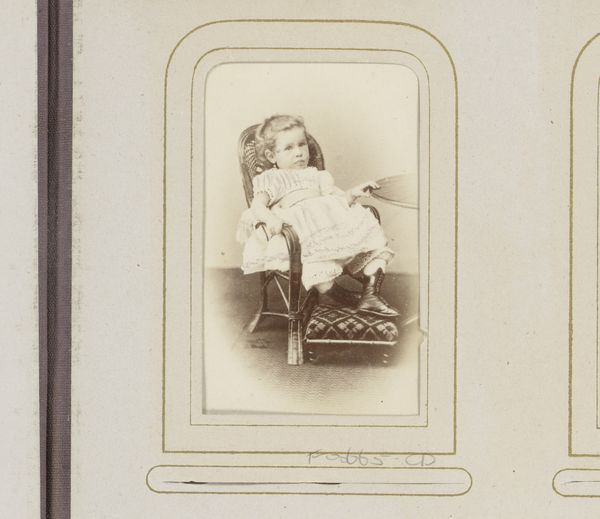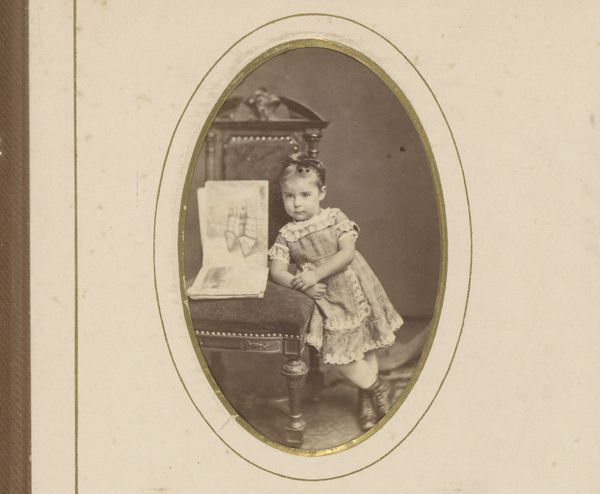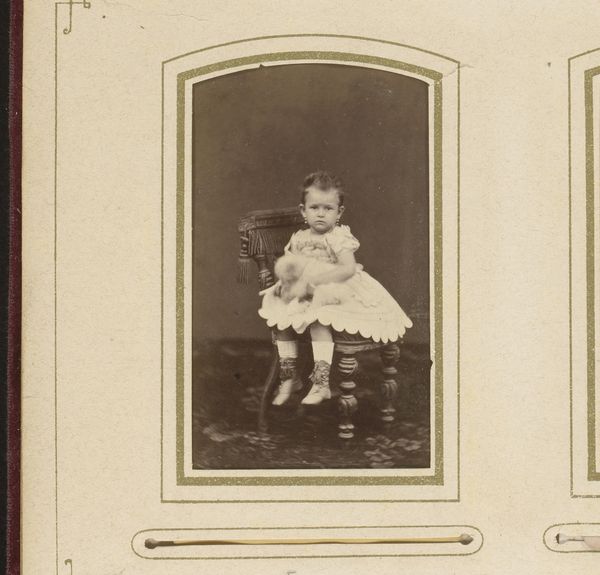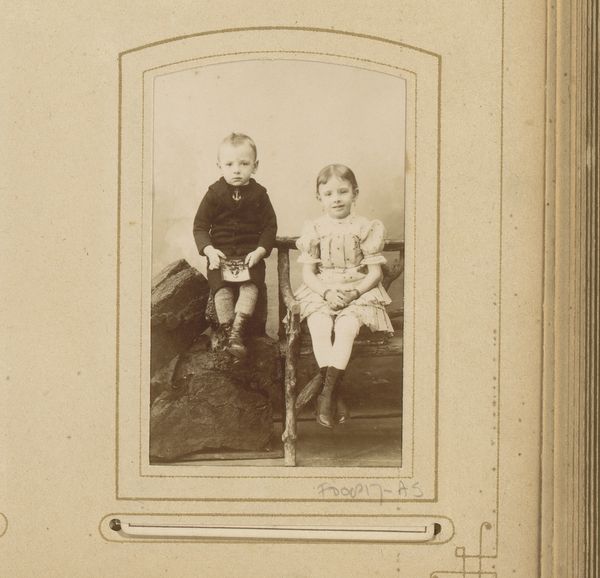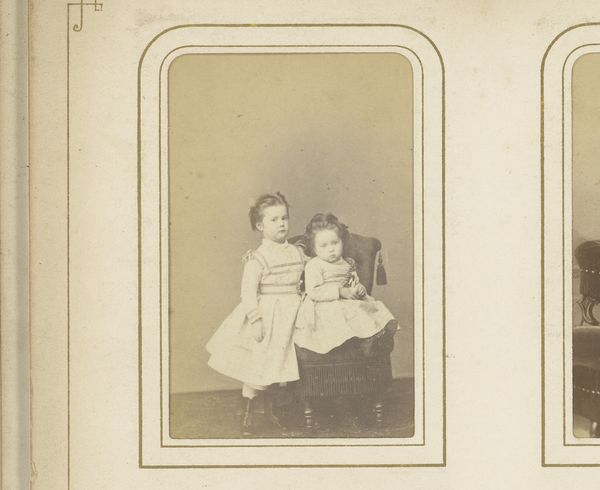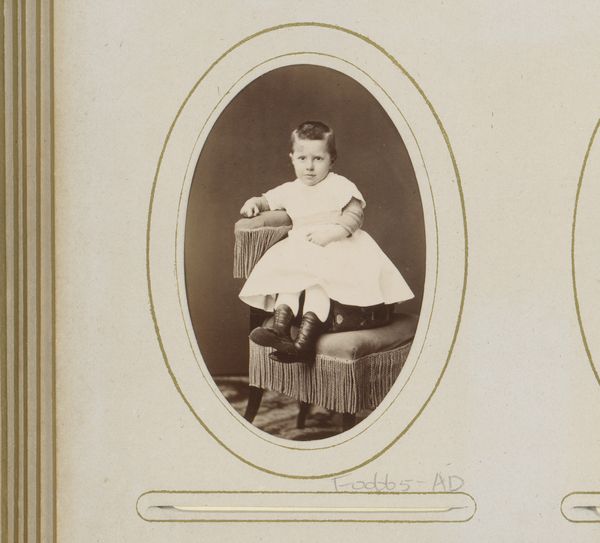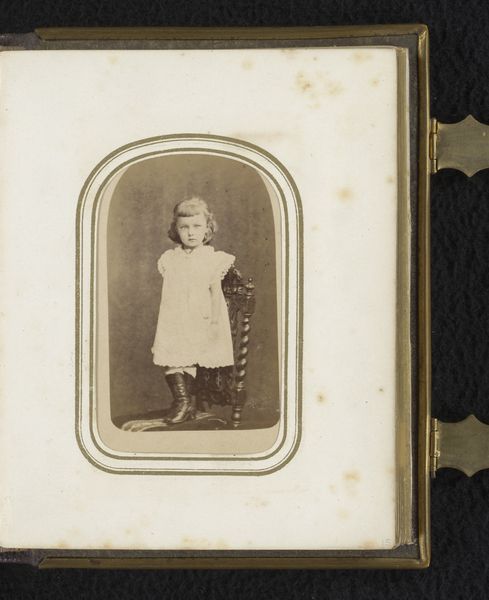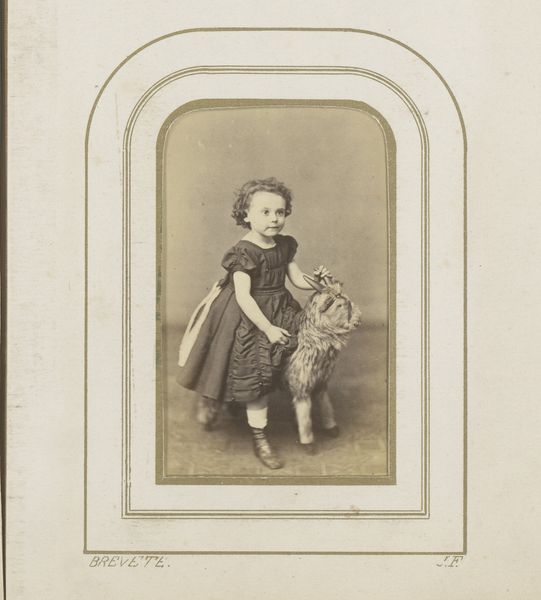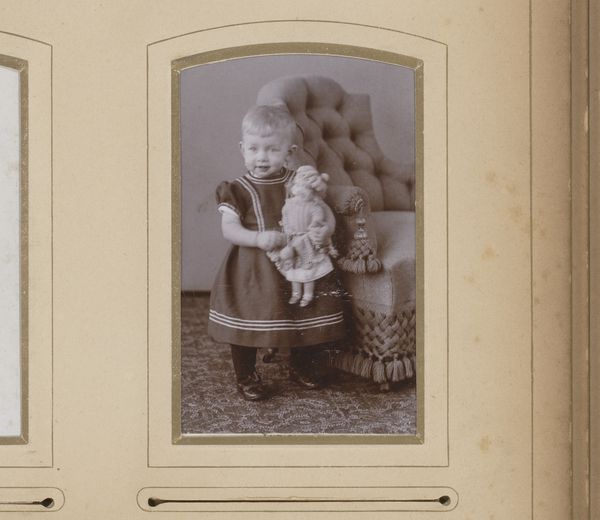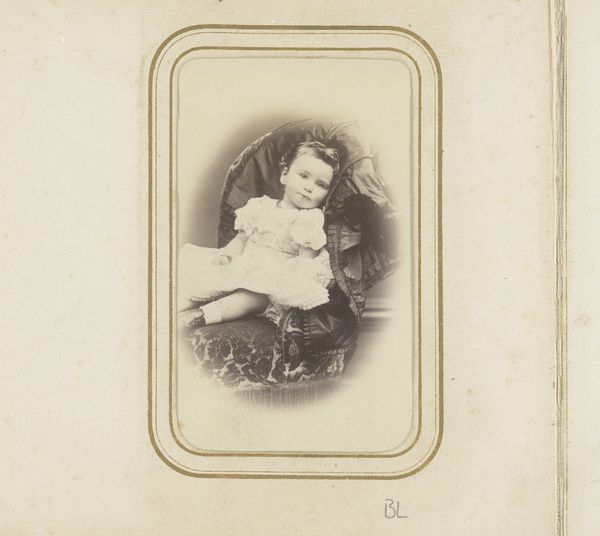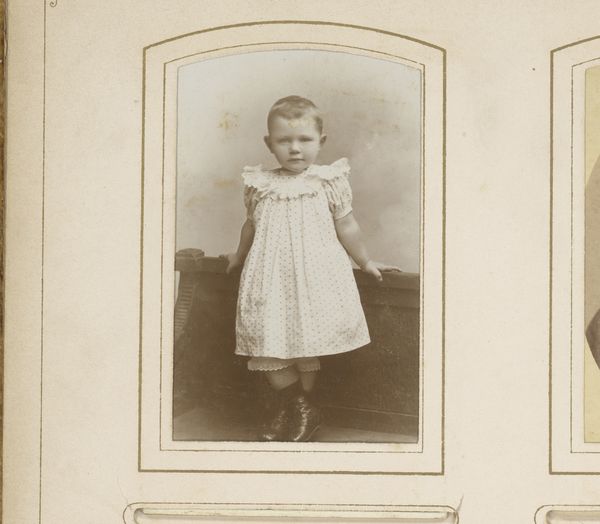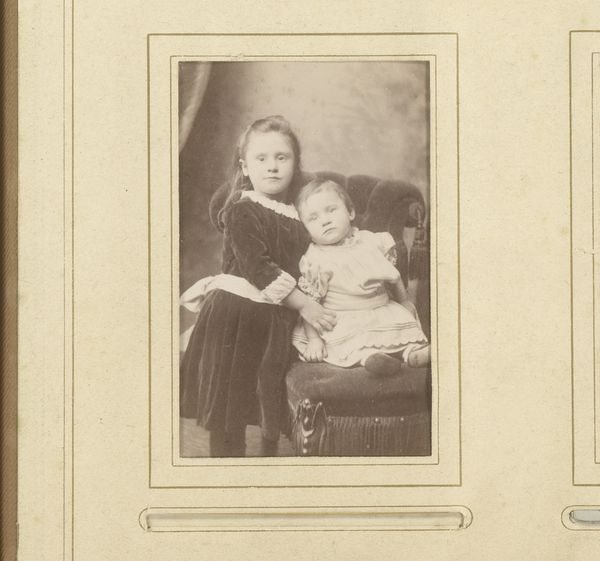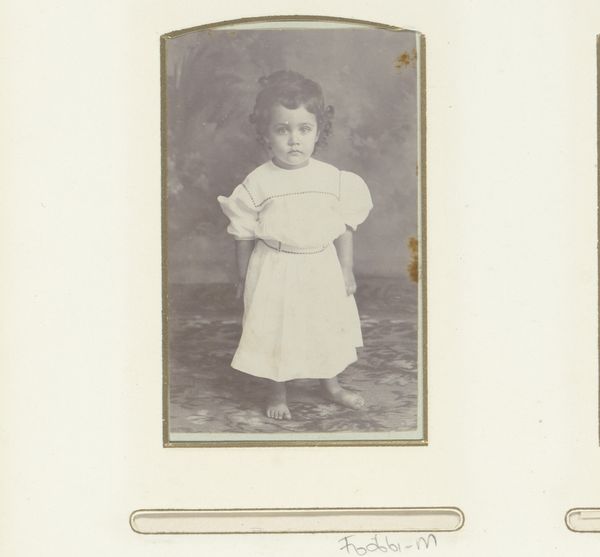
Portret van een baby op een stoel en een staand meisje, met op de voorgrond een hoed 1859 - 1866
0:00
0:00
photography
#
photography
#
historical photography
#
19th century
Dimensions: height 82 mm, width 52 mm
Copyright: Rijks Museum: Open Domain
Curator: Let's have a look at this arresting image, a photograph titled "Portret van een baby op een stoel en een staand meisje, met op de voorgrond een hoed," captured sometime between 1859 and 1866 by Adrien Barboni. What’s your initial take on this glimpse into the past? Editor: Stark. Endearing, but primarily stark. There's such an intense, unsmiling gravity to those faces, almost unnerving for what should be an innocent portrait of childhood. And that abandoned hat adds a theatrical touch! Curator: That seriousness is palpable, isn’t it? We're so used to performative cheer in photographs now, but these kids stare right through the lens. To me, the dropped hat speaks volumes – a symbolic offering, a childhood dream carelessly tossed aside, or maybe it was simply too itchy to wear for more than a minute? It's such a potent visual element. Editor: I see the hat as a stand-in for vanishing innocence, as one often thinks when one encounters portraits from the Victorian era: that loss of simplicity inherent in the technology and practice itself. It's funny, because the hat itself reads almost like a halo! It seems odd and yet so deliberate. What symbols do *you* notice? Curator: Definitely the contrasting attire! The seated infant, presumably the baby of the title, is clad in what appears to be soft lace or muslin, an angel made of meringue. In contrast, the elder girl seems to be wearing heavier garments, and seems sturdier. That's a fascinating distinction. What narrative potential! A Cinderella of photography, no? I’m also struck by the formal pose—how unnervingly controlled. You’re spot on with the halo description! Editor: Ah, yes, costume playing its part! It seems Barboni staged a theater of the middle class. What I keep pondering is that absence of light and shadow… Look how even the tones are – they make them both universal. The portrait makes us remember those old beliefs that taking portraits steals the soul. Perhaps, for them, this shot represented the passing of one stage in favor of something quite uncertain. Curator: Such a resonant interpretation! A bargain with posterity, exchanging a fleeting moment for the possibility of eternal memory, all framed in sepia tones and weighty social implications. I hadn't considered that theft-of-the-soul trope but now I can't shake it. Editor: Absolutely! Each re-framing offers more perspectives, no?
Comments
No comments
Be the first to comment and join the conversation on the ultimate creative platform.
